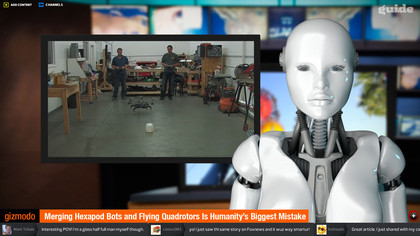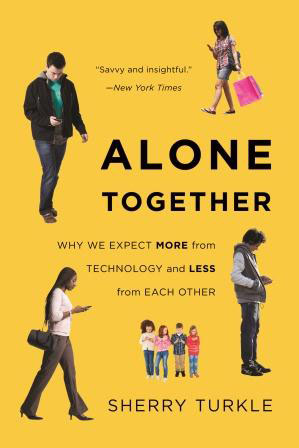How virtual characters are getting smart
Avatars that understand
Simulated social interaction
The use of computer-generated avatars in place of human news readers might seem like nothing more than convenient and fun, but there is some evidence that we're beginning to trust machines more than each other. How many times have you sat having a conversation with friends when a fact is disputed; before long someone always says, 'why don't we just ask the internet?' and pulls out a smartphone. Conversation over.
A recent study by researchers at Case Western Reserve University in Cleveland, Ohio suggests that depression symptoms in 18-25-year-olds may be significantly reduced when they interact with a computerised avatar of a doctor or consultant rather than the real thing.
And the computerised avatar really is coming. FIONA (Framework for Interactive-services Over Natural-conversational Agents) is an online assistant for designing avatars the next generation of virtual avatars. This is where developers, researchers, companies, geeks and designers from around the world can upload their own 'killer' feature, called 'sparks'; a specific behaviour, an amazing character or the best of someone's knowledge on any given topic. The goal is a higher form of artificial intelligence that can understand us, as well as serve us.
FIONA is the brainchild of Spain-based Adele Robots, though the likes of Chatbots, Nuance, Verbio and Ivona are involved, as are several universities.
"An avatar, also called a Virtual Assistant or Embodied Conversational Agent, is a cartoonish yet realistic representation of a person who you can talk to, and answers you like a human," says Lucía Fernández Cossío, Director of Projects at Adele Robots. "Avatars have a multitude of different uses from advising you on the purchase of a car to emulating a television news reporter."

An open source tool, the avatars that are created by FIONA will ultimately appear as smartphone apps, though computer-based forms and even life-sized holographic projections are on the horizon, too.
"You could have one in the entrance of an office building to welcome visitors and help them find who they are looking for," says Cossío, who also suggests that avatars could soon be appearing on bank ATMs, on corporate websites, and in people's homes as personal assistants capable of controlling our homes' heating, lighting, and information requirements. It's not just about asking an avatar for something you want – it will probably already know, and brilliantly fake some endearing characteristics, to boot. You might even fall in love with it.
Get daily insight, inspiration and deals in your inbox
Sign up for breaking news, reviews, opinion, top tech deals, and more.
"A next generation will become accustomed to relationships; some with pets, other with people, some with avatars, some with computer agents on screens, and still other with robots," writes clinical psychologist Sherry Turkle, Abby Rockefeller Mauze Professor of the Social Studies of Science & Technology at MIT, in her book Alone Together: Why we expect more from technology and less from each other.

Turkle talks about the 'robotic moment of more' represented by none other than 90s phenomenon Furby – an unpredictable robotic pet that demands attention – that encourages humans to nurture a machine, accidentally training us to expect 'relationships with less' with real people. "With sociable robots we are alone, but we receive the signals that tell us we are together," she writes.
Of such robotic relationships Turkle draws parallels with our current always-on networked lives where we all invite insomnia by slavishly checking our email and Facebook before sleep. "Always on and now always with us, we tend the Net, and the Net teaches us to need it," she writes, predicting a future where, "confiding in a robot will be just one of many choices."
Talking to Siri will never be the same again.
Jamie is a freelance tech, travel and space journalist based in the UK. He’s been writing regularly for Techradar since it was launched in 2008 and also writes regularly for Forbes, The Telegraph, the South China Morning Post, Sky & Telescope and the Sky At Night magazine as well as other Future titles T3, Digital Camera World, All About Space and Space.com. He also edits two of his own websites, TravGear.com and WhenIsTheNextEclipse.com that reflect his obsession with travel gear and solar eclipse travel. He is the author of A Stargazing Program For Beginners (Springer, 2015),
